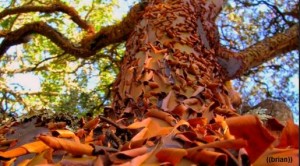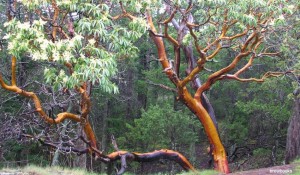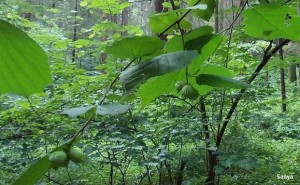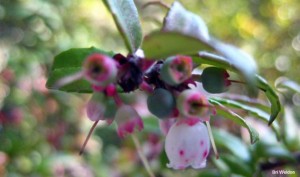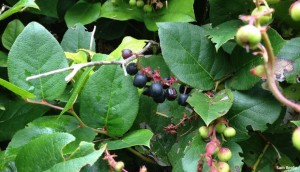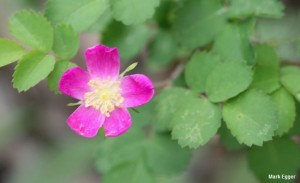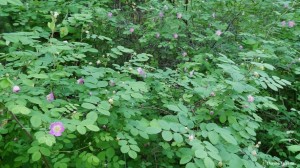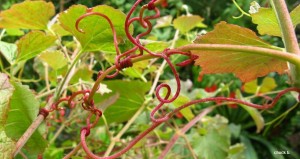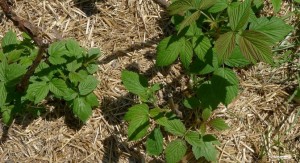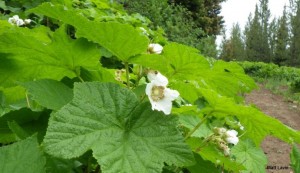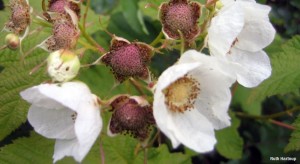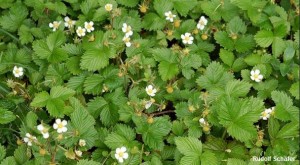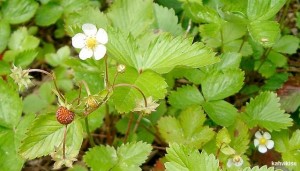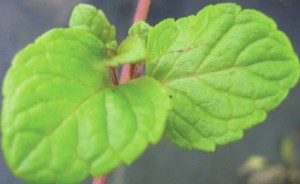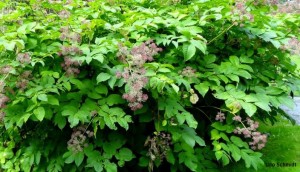Medicinal and Edible Plants of the California Redwood Understory
There is a plethora of medicinal and edible plants living in the foggy shadows of the California Redwoods.
Below is a short list of great natives to use in your shade garden or observe in their natural environment. *
Madrone / Arbutus menziesii - Both the fruits and the flowers are edible, although the fruits are high in tannins and therefore are sometimes made into cider. Long known as bee plants, madrones provide honeybees with ample nectar and pollen and are important tree species for commercial beekeepers. Madrone wood is dense and durable, making it popular as a flooring material and an efficient fuel source. The bark has also been used to tan leather and the wood to make charcoal for gunpowder.
California Hazelnut / Corylus cornuta - People have utilized them as a rich food source for centuries, and the nuts are still grown commercially in some places. In the San Francisco and Monterey Bay areas, indigenous Californians in the Muwekma Ohlone, Rumsien Ohlone, Amah Mutsun, and Ohlone/Costanoan/Esselen Nations did, and still do, eat the nuts whole or boil them to extract the flavorful oil. Hazelnut wood is used for arrows, hooks, utensils, baskets, and fishing traps.

Huckleberry / Vaccinium ovatum - Huckleberries are some of the tastiest of California’s native berries and can be eaten fresh, dried, or preserved. They are a close relative of the blueberry and have a high Vitamin C content.
Salal / Gaultheria shallon - The berries grow sweeter with autumn frosts, and can be eaten fresh or made into jams, preserves, pie fillings, or even wine. Native Americans utilized them as a regular food source, often drying them into cakes and mixing them with bear fat. The leaves can be used to flavor soups, and also have medicinal value as anti-inflammatory teas, tinctures, and poultices.
Wood Rose / Rosa gymnocarpa – The hips contain high levels of Vitamin C, as well as calcium, phosphorous, and iron. They can be eaten raw or cooked; however, it is important to first remove the seed hairs as they can cause irritation to the mouth and throat. Shoots and petals can also be eaten raw, and the seeds (hairs removed) are high in Vitamin E, good as a nutritional supplement, ground and added to flours. There are many medicinal uses for the wood rose: chewed leaves can be applied to reduce localized pain and swelling, as well as to make teas. The pliable woody stems can be bent into hoops or used to make arrows.
California Grape / Vitis californica – The grapes, enjoyed by wildlife and humans alike, can be eaten raw or made into jams and jellies. Young tendrils are also edible either raw or cooked, and tender leaves can be wrapped around other foods and baked to enhance the flavor. Native Americans use the roots and vines in basket and rope making and obtain a yellow dye from the leaves. Wild California grapes are also credited as the saviors of the European wine industry, when most of Europe’s wine grapes succumbed to a pest outbreak in the late nineteenth century. California grapes were resistant, and since then almost all commercial wine grapes produced globally have been grafted onto California grape rootstock.
Black Cap Raspberry / Rubus leucodermis - The berries are great for eating raw and for making jam (if you can get enough). The flavor is subtle, not as sweet as commercial varieties. Medicinally it is used as an astringent to stop bleeding and treat dysentery. Also the roots and leaves may act as a mild sedative.
Thimble Berry / Rubus parviflorus – The sweet and tangy fruits ripen to a deep red in summer, and can be eaten fresh, dried, or as preserves. Shoots can be peeled and eaten as a vegetable or made into a tonic herbal tea. The bark can be used to make soap, and dried and powdered leaves can be used to prevent scarring from burns.
Woodland Strawberry / Fragaria vesca - In addition to being a good source of vitamin C and antioxidants, both the berries and the leaves of the woodland strawberry act as natural bleach, whitening tooth enamel as well as preventing the buildup of tartar. The leaves and roots were used as far back as the Middle Ages for tooth and gum health. All parts of the plant have been used medicinally, as digestive aids (roots, stalks), astringents (leaves), and antibacterial salves (leaves, juice).
Yerba Buena / Satureja douglasii / Clinopodium douglasii - The small, shiny green aromatic leaves have been used in soothing teas, as a cooking herb, or in potpourris and perfumes. Yerba Buena – the common name of related plants found on several continents – has long been used medicinally by Native American, Mexican, and European peoples for a variety of digestive ailments.
California Spikenard /Aralia californica - Spikenard berries can be harvested and eaten fresh, cooked, or dried. Like its ginseng relatives, is used medicinally as a tonic. The roots are used as an anti-inflammatory remedy and as a cough suppressant and expectorant.
* Please do not harvest plants on public lands without checking local and state regulations first.


